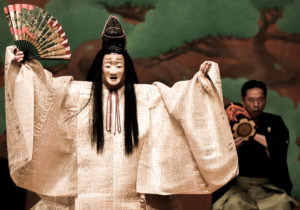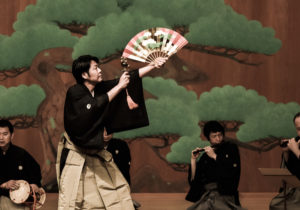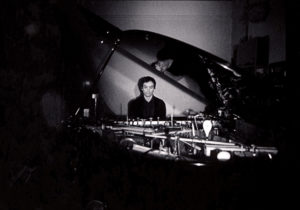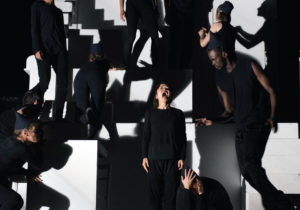Into the Dream Time…
Interview
Noh Reimagined returns to Kings Place for a third edition, focusing on the dream world of Mugen Noh. Michael Church meets curator Akiko Yanagisawa.
After 650 years Japanese Noh theatre is still going strong. The National Noh Theatre in Tokyo is regularly packed out, and on little wooden stages all over the country Noh is still being performed as it originally was on the penal island of Sado. Meanwhile its Western adherents – who have included the poet WB Yeats and the theatre director Peter Brook – are steadily growing in number, while Yukio Ninagawa’s Noh-impregnated theatre productions routinely fill theatres. It is as though Westerners have only recently cottoned-on to an aesthetic truth with which the Japanese have been familiar for centuries.
‘Gorgeously-costumed actors pose like statues, with climactic moments of ferocious activity’
That truth eludes simple description, because it involves a multiplicity of elements. Noh is a music-dance drama, and it’s also valued as literature and for the beauty of its costumes. It takes place as much in the minds of its audience as it does visibly onstage, and its stage is always the same: a plain wooden structure with a painted pine-tree as its backdrop, and with a wooden bridge leading off into the shadows over which the actors enter and exit. That bridge symbolises the passage between the everyday world and the dream world in which Mugen Noh – the art-form’s crowning glory – unfolds. Mugen exists in a dream world populated by ghosts – and many of its stories concern tragic love affairs and the righting of past wrongs in real life; there is much praying for the repose of souls.
Everything in a production conspires to heighten the reality of this dream world. The gorgeously costumed actors pose like statues, with climactic moments of ferocious activity. They wear masks which are designed paradoxically to intensify the emotions they express in their outbursts of yodelling or sepulchral song. The music itself is uniquely haunting, with the singing of the main actors supported by a unison chorus plus a flute whose intervals are – intentionally – unrelated to those of the singers, resulting in an ethereal cacophony; three drums, accompanied by martial shouts, propel the action.
All this is blissfully low-tech. Yet Akiko Yanagisawa, the producer of Noh Reimagined 2018, aims not only to induct Kings Place audiences into the mechanics of traditional Mugen performance, but also to help relate this art-form to the latest developments in neuroscience. Dr Atsushi Iriki, who heads research into brain science at the Riken Institute, Japan, and who is also an amateur Noh performer, will discuss how humans acquire the concept of a ‘meta-self’ – the sense of observing one’s self while standing outside it, in an out-of- body experience. Professor Semir Zeki, who leads research into neuroaesthetics at University College, London, will expand on his arresting thesis that the artist is, in a sense, a neuroscientist, exploring the potential of the brain though with different tools. ‘How artistic creation stimulates aesthetic responses’, he says, ‘can only be understood in neural terms. Such an understanding is now well within our reach.’
Meanwhile the pianist and improviser Leon Michener, architect of the Klavikon system, a combination of amplification, feedback and analogue processing, will come at Noh from a different direction: the key Japanese concept of ma. This word means ‘the space between sounds’ and implies infinitely more than does the Western concept of ‘silence’. Michener plans to sculpt feedback into music without his hands touching the keyboard.
Workshops with Japanese experts will examine Noh acting, movement and the secrets of the masks. For the final performance of the weekend, Yanagisawa has involved the innovative Clod Ensemble, famous for their striking dance and movement installations, as well as Max Baillie and other musicians for a new work by Yukihiro Isso. Yet again, Noh Reimagined promises to be a rare opportunity to witness a 650-year-old tradition provide the spark for new creative thinking.




